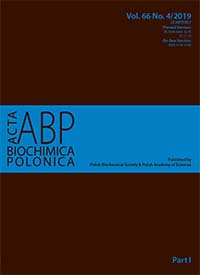Clinical value of peripheral blood M2/M1 like monocyte ratio in the diagnosis of breast cancer and the differentiation between benign and malignant breast tumors
Abstract
Background: During tumor progression, circulating monocytes and macrophages are actively recruited into tumors where they alter the tumor microenvironment to accelerate tumor progression. In response to multiple microenvironmental signals from the tumor and stromal cells, macrophages change their functional phenotypes. Based on their function, macrophages are commonly classified into both, classical M1 and alternative M2 macrophages. M2-like tumor-associated macrophages promote breast tumor growth and survival, and may migrate into the peripheral blood. However, the level of circulating M2/M1-like monocyte ratio in the peripheral blood of breast cancer patients has not been yet clarified. Aim: To compare peripheral blood M2/M1 monocyte ratio among breast cancer patients, benign breast tumor patients and healthy subjects. Also, to investigate the role of peripheral blood M2/M1 monocyte ratio as a circulating breast cancer tumor marker and to asses the validity of this marker in differentiation between benign and malignant breast tumors. Methods: Flow cytometry technique was used to determine the peripheral blood M2/M1 monocyte ratio in three groups of subjects, i.e. 45 patients with breast cancer, 40 patients with benign breast tumor, and 40 healthy subjects as a control group. The results of carbohydrate antigen15-3 (CA15-3) determination were analyzed comparatively. Results: The peripheral blood M2/M1 monocyte ratio in patients with breast cancer (0.27±0.1) was significantly higher (P<0.001) than that in healthy subjects (0.07±0.05) and than in benign tumor subjects (0.08±0.04). The area under the receiver operating characteristic (ROC) curve of peripheral blood M2/M1 monocyte ratio determination was significantly higher (P≤0.001) than that of CA15-3 levels. Conclusion: M2/M1-like monocyte ratio is of a high diagnostic value for breast cancer and is a promising differentiating marker between benign and breast cancer tumor groups.
Acta Biochimica Polonica is an OpenAccess quarterly and publishes four issues a year. All contents are distributed under the Creative Commons Attribution-ShareAlike 4.0 International (CC BY 4.0) license. Everybody may use the content following terms: Attribution — You must give appropriate credit, provide a link to the license, and indicate if changes were made. You may do so in any reasonable manner, but not in any way that suggests the licensor endorses you or your use.
Copyright for all published papers © stays with the authors.
Copyright for the journal: © Polish Biochemical Society.


